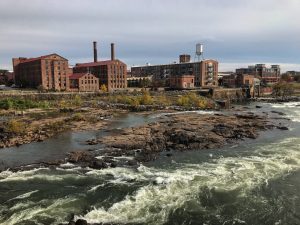


Columbus GA is a beautiful waterfront city located in Georgia. The city lies on the banks of the Chattahoochee River along the Alabama-Georgia border in the immediate vicinity of Phenix City. Being a consolidated city-county, Columbus serves as the administrative center of Muscogee County and the principal city of the larger Columbus metropolitan area. As of 2017, the population of Columbus was estimated to be a little over 194,000 residents; almost two-thirds of the population of the entire Columbus metropolitan area which was estimated to be around 303,000 people. As such, Columbus is ranked as Georgia’s third-largest city after Atlanta and Augusta.

With the Chattahoochee River serving as the main transportation system between Columbus and the outside world, the city quickly evolved into a prominent farming community and one of the main cotton exporters in the region. The local economy was further boosted by the arrival of the railroad in the 1850s. Soon enough, numerous textile mills were established along the Chattahoochee River, slowly transforming Columbus from a dominant agricultural center into one of the principal industrial centers in the South.
During the American Civil War, Columbus, an already developed industrial city, became the second-largest producer of uniforms, cannons, machinery, and firearms for the Confederacy. It was also the location of the last land battle in the war-the Battle of Columbus. Most of the industries were destroyed during the battle but the city recovered easily after the war and re-asserted its dominance as a top industrial center.
Today, Columbus is a thriving commercial center boasting of modern infrastructure, world-class schools, and a growing tourism industry. The city is home to the high flying Columbus State University, Fort Benning, and many other top organizations.


